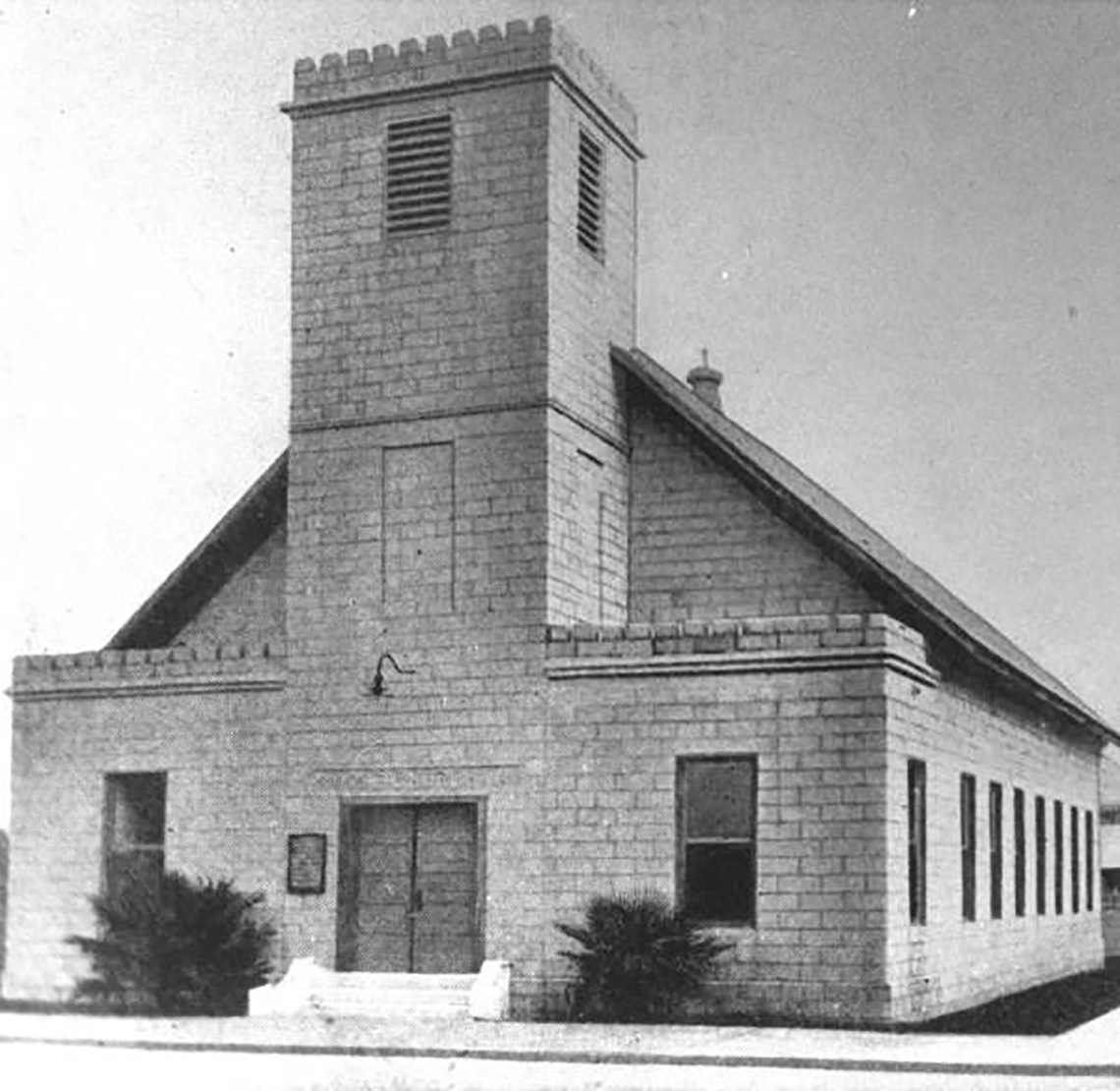The first known church built in Broward County was a lean-to made of palmetto, built by black believers living in Deerfield.
Sister Danelia Huntley was one of the founders of the First Zion Baptist Church: “During the year 1902,” she recalled much later, “I moved to Deerfield, and at that time there were four or five black families and not more than forty Negroes.” In August of that year, “Rev. Lawrence and a Mrs. Knight, who were both Methodist leaders, got the people together and began holding services in a bush harbor (the lean-to), built from palmettos by Sister Knight, and myself, with the help of a few boys.”
A Methodist Episcopal Church with a predominantly white congregation was formed in 1903, and in 1904, another black congregation, the Piney Grove Missionary Baptist Church, emerged. Both sat within our city limits to be.
Black settlers had migrated here from Georgia, South Carolina and the Bahamas. Many were in the force of 400 railroad workers recruited by Philemon Bryan to build the rail extension to the New River in 1896. They first settled in tents and shanties along the railroad tracks, and those that stayed set up farms or found work elsewhere.
Piney Grove Baptist became a force in the cultural community over the years, much like another major black church to come along later, Mount Olive Baptist (1918). Brother I.H. Williams, one of the 11 founding members of Piney Grove Baptist, said that he and other foundation worshippers met under a tree before their building was constructed. The church, now named First Baptist Church Piney Grove, has had many venues over the years and is currently located in Lauderdale Lakes.
From 1911 to 1915 came many of the other congregations that we know today. In 1911, the year that Fort Lauderdale was incorporated (the population was then 150), three new Methodist churches were built. Soon after came All Saints Episcopal, formed by eight women, and then the First Presbyterian Church. By 1913, there were 65 Catholic families, and St. Anthony’s was born. The church pioneered Catholic education in the area, opening its school in 1926 with 64 students in grades one through 11.
Among the more intriguing churches to take root here was Mount Hermon AME Church, established in 1906 under Rev. J.H. Haines. AME stands for African Methodist Episcopal, a denomination founded in 1787 by Rev. Richard Allen in Delaware. As a slave, he was denied the respect of a last name. The whites called him “Negro Richard.”
Mount Hermon and all AME churches follow the framework Bishop Allen pioneered, as blacks were shunned in most white churches. It was the first major religious denomination that developed because of race rather than theology.
In its protest against racial discrimination and slavery, the AME church was in keeping with the Methodist Church founder John Wesley’s beliefs. He once called the slave trade “that execrable sum of all villainies.”
In the 19th century, AME churches collaborated with the mainstream Methodist Episcopal Church, a predominantly white denomination, to set up the second independent black college, Wilberforce University in Ohio.
According to Mount Hermon AME’s website, “We have always been a progressive, pioneering people. Our first, appointed pastor, Rev. J.H. Haines, was registered to vote before it was remotely common for black people to do so – on March 23, 1916, at the age of 44. As a matter of fact, our first three ministers were registered voters.”
To understand how groundbreaking this was, consider the fact that women didn’t get the right to vote until 1920.
Among the church’s prestigious members over the years: Professor Clarence Walker, who took Dillard School to such great heights; Dr. James Sistrunk, the city’s first black physician; and Dr. Von D. Mizell, who with Dr. Sistrunk, built the first hospital in the black community. In 1945, the church surreptitiously hosted the city’s first meeting with the NAACP under cover of night, for fear of KKK attack. The church is now located at 401 NW Seventh Terrace.
Although the first Jewish temple wasn’t built until 1937, a group of seven families held an initial Yom Kippur service in a rented room atop a restaurant in 1926. Later, in the middle of the night, the hurricane of 1926 blew away not only that building, where they had hoped to have an ongoing synagogue, but most of the town. It ended a land boom and caused the exodus of thousands of residents.
Yet within years people returned and the number of churches and synagogues (plus eventually a scattering of mosques, and Buddhist and Hindu temples) began to soar. Men, women (and God) have marched on: These places of worship now number in the thousands.












